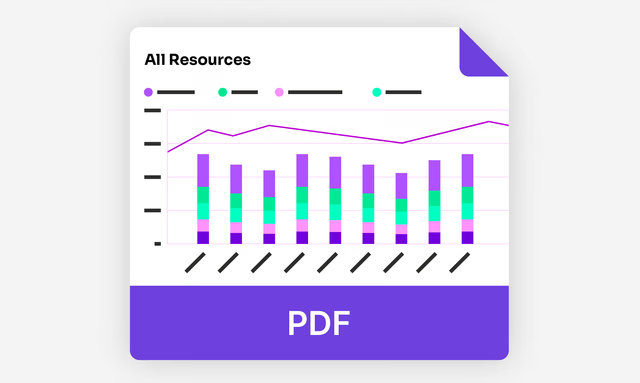In the modern enterprise, the CEO’s relationship to technology has fundamentally changed. No longer is cloud infrastructure a technical footnote buried in quarterly reports — it’s a strategic driver of profitability, agility, and innovation. But as the cloud continues to scale and artificial intelligence becomes central to digital transformation, a new kind of leadership is required — one grounded not only in vision, but in visibility.
The question for every CEO today is no longer, “Are we investing in the cloud?” It’s, “Do we understand what those investments are worth?”
Enter FinOps — a discipline that unites engineering, finance, and operations to bring financial clarity to technology decisions. And at the center of this movement are platforms like Vantage, designed to give leaders the insight and control needed to govern cloud spending responsibly.
The Executive Cost Blind Spot
The cloud was supposed to simplify IT spending: pay for what you use, scale as you grow. But in reality, most organizations have lost visibility into what they’re actually paying for. Between multiple providers, decentralized teams, and fast-moving product cycles, cloud bills have become as complex as the systems they support.
For CEOs, that complexity translates into a leadership blind spot. When infrastructure costs rise unpredictably, forecasting becomes guesswork and operational excellence becomes harder to quantify.
FinOps restores that visibility by treating cloud spending not as a technical issue, but as a financial and cultural one. It creates a shared language that allows executives to tie technology decisions directly to business outcomes.
Vantage provides that lens at enterprise scale — transforming cloud cost data from an accounting detail into a strategic signal.
From Cloud Cost to Cloud Strategy
Historically, cloud cost management was reactive: bills arrived, budgets adjusted, and teams moved on. But the stakes are now too high for that approach. For most enterprises, cloud and data infrastructure represent the second-largest operating expense after payroll.
A CEO who treats cloud costs as a technical afterthought risks losing both profitability and agility.
FinOps platforms like Vantage change the equation by giving executives real-time access to financial insights across providers like AWS, Azure, Kubernetes, and Datadog. This unified view allows leaders to understand where the money is going, why it’s being spent, and how it aligns with strategic priorities.
Instead of waiting for the bill, CEOs can anticipate the trend — and make decisions before costs spiral.
The CEO’s Role in FinOps Leadership
FinOps works best when it starts from the top. Like any cultural shift, it requires executive sponsorship and modeling. CEOs who champion financial transparency in technology signal that efficiency and accountability are not constraints — they’re enablers of innovation.
The playbook for leading FinOps adoption is straightforward:
– Empower cross-functional collaboration between finance, engineering, and product teams.
– Insist on shared data — not separate dashboards.
– Celebrate optimization wins the same way you celebrate revenue milestones.
Vantage helps operationalize this leadership by turning visibility into action. It provides the data foundation CEOs need to lead strategically, not reactively.
FinOps as a Competitive Advantage
In an economy where efficiency defines market leaders, FinOps isn’t just a cost-management tool — it’s a differentiator.
Companies that can measure and manage the financial health of their infrastructure move faster, price more competitively, and allocate capital more intelligently. In the era of AI-driven workloads — where compute costs can fluctuate wildly — that financial agility is essential.
Vantage’s platform enables exactly that agility. It offers CEOs and their teams a real-time pulse of cloud economics: what’s driving cost, what’s driving value, and where optimizations can deliver measurable impact.
This isn’t financial micromanagement — it’s operational intelligence.
AI Efficiency Starts with Financial Clarity
As AI adoption accelerates, CEOs face a paradox: the very technologies driving transformation are also driving cost volatility. Training large models, orchestrating data pipelines, and maintaining scalable inference environments require massive compute resources.
FinOps gives executives a way to manage that complexity without slowing innovation.
By connecting AI operations with financial governance, platforms like Vantage enable organizations to quantify the true cost of intelligence — and ensure it delivers returns that justify the investment.
This kind of financial clarity isn’t just good business — it’s good leadership. It ensures that AI innovation is grounded in accountability.
Building a Culture of Visibility
The most powerful outcome of FinOps isn’t savings — it’s literacy. When every team understands the financial impact of their decisions, accountability becomes cultural.
CEOs play a critical role in fostering this literacy. By encouraging transparency and rewarding efficiency, they can make cost awareness part of the company’s DNA.
Vantage supports this cultural shift by democratizing access to data. It doesn’t hide complexity behind finance teams or cloud experts — it surfaces it in ways everyone can understand. The platform transforms visibility into empowerment, and empowerment into better decisions.
The Path Forward
In 2025, the most effective CEOs are those who treat technology as both an innovation engine and an investment portfolio. They understand that cloud success isn’t about scaling endlessly — it’s about scaling intelligently.
FinOps provides the operating model for this kind of leadership. Platforms like Vantage make it operational, embedding financial intelligence into the heart of business strategy.
In the years ahead, the organizations that win won’t necessarily be those that spend the most on cloud or AI — they’ll be the ones that understand those costs best.
For CEOs, that understanding starts with visibility. And visibility starts with FinOps.




